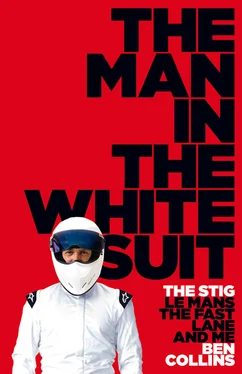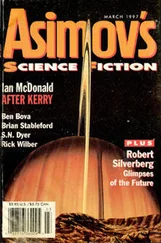Regardless of how the suspension fault occurred, my gut feeling was that the Ascari project was at an end. It couldn’t carry on without a major sponsor. We’d needed that Le Mans result. Come July, I was looking for a job.
I phoned every team in the book for a drive, in every series from Le Mans to Formula 1 to NASCAR. One call paid off in September just a few days before the inaugural Indycar race in the UK. I’d been bugging the life out of the organisers for a drive, and at the last minute the Series Director rang and asked what I was doing that weekend.
‘Coming to Rockingham to watch the Champ Car race.’
‘Well, bring your helmet and overalls, there’s a drive for you in the support race.’
Rockingham’s newly formed programme was based on NASCAR, America’s most popular racing series. One in three Americans was a fan; viewing audiences were enormous and the sponsorship and advertising revenues ran into billions of dollars. The stadiums, cars and fan base were all vast.
The formula for success was simple: they raced stock cars based on America’s three most popular sedans that were virtually identical in performance and available to anyone. These agricultural machines were built of tube steel, with clunking metal gear-shifters straight off a Massey Ferguson and snarling V8 motors. The circuits were mostly ovals where you only steered left. The cars were set up with most of their wheels pointing that way – so much so that you had to steer right just to drive one in a straight line.
Much to the amusement of the Americans, the UK series was called ‘Ascar’, prompting the enduring question: ‘You race Ass-Car?’ The packed grid boasted top British drivers like World Rally Champion Colin McRae, Touring Car Champion Jason Plato, some F1 testers and competitors from the USA.
They raced wheel to wheel at Rockingham’s 1.5-mile Speedway at continuous speeds of up to 180mph. Rockingham was purpose built in an industrial backwater near Corby, Northants, a town famous for … not very much. The stadium rose out of the ground like a modern Colosseum amidst a sea of tarmac parking for thousands of spectators. It was American-style BIG, with packed grandstands just metres back from the action. The track was wide enough to fit six cars side by side with gentle banking to assist the flow of speed through the four corners.
Europeans largely regarded oval racing as boring, having only seen it on television. When you attended a live race, you realised the droning pack of cars were largely out of control. It was a thrilling high-speed spectacle. The question wasn’t whether they would crash, but when and how hard.
My car was owned by Mark Proctor, a Goliath of a Yorkshireman who also competed in the series. It was his spare, and looked like many of its vital components had been cannibalised. I sat inside its spacious cabin behind a steering wheel big enough for a bus and rearranged some electrical wiring that dangled from the roof. I resolved not to judge a book by its cover. The old girl might have it where it counts.
She didn’t.
After missing the test session with an engine problem, I got to grips with my first stock car in the open qualifying session and discovered why NASCAR racers described understeer as ‘push’. Whenever I went hard into a corner, the apex repelled the car as if it were the like pole of another magnet. I qualified two places from last and contemplated hanging myself from the wiring that had come loose again.
In the parc fermé before the race, a sports agent saw me leaning over my car at the tail end of the pre-formed grid. I tried hiding but he caught me.
‘I see you’re going well then!’
I smiled through clenched teeth. ‘I won’t be here long.’
At the rolling start, the cars sped into the first corner in side-by-side formation and slithered into the turn as they lost down-force in the hole they cut through the air. The volume of air being pushed in all directions was enough to barge neighbouring cars aside and affect their handling.
I felt the changing air pressures immediately in my inner ear. By nosing inside the car in front you could use the air buffeting from your bonnet to kick out his tail; by running outside you could suck away his air and make him ‘push’. To exacerbate your opponent’s handling problems, you sat in the same position for a few laps until his tyres burnt out.
My dog of a car floated like a butterfly in the wake of dirty air behind the other racers and stuck to the track like a squashed toad. In ‘clean air’ it was rubbish, so I had to leapfrog from one victim to the next without delay. The drivers made it hard. When people moved over on me I stuck my nose into their side and pushed back; they called it ‘rubbing’. I had a few close encounters with the wall, and at 160mph it puckered up your ass cheeks tighter than a lobster’s en route to the boiling pot.
This style of physical racing really suited me and before I knew it the race was over. Having started eighteenth, I finished on the podium in third.
If I was lucky, my performance might secure a drive for the following season. The prize for winning the Championship was a test in American NASCAR.
I still spent hours, days, months on the phone calling teams and looking for sponsors. Nothing. I offered advertising agencies the marketing opportunity of a lifetime to back the first British NASCAR Champion. I hit the Yellow Pages and talked the hind leg off alcohol firms, factories and pizza chains. Even as I did it my objectives felt increasingly shallow when I considered the host of causes around the globe that money could be more fruitfully spent on.
After another day of having the phone slammed down on me, the manager of a local automotive company gave me some air-time.
‘The last racing driver who asked me for sponsorship was Damon Hill,’ he said. He was nibbling the bait; time to reel him in.
‘Of course,’ I enthused. ‘And he went on to win the World Championship.’
‘Yeah,’ he chuckled. ‘The answer’s the same now as it was then. No .’
Perhaps publicity would help attract sponsorship. I thumbed the Rolodex and spoke to every men’s magazine editor in the galaxy, then the TV executives. I did a screen test with Channel 4, had an interview with Fifth Gear and drove a Ford Focus for some bloke at Dunsfold. Nothing had come of it.
I maintained a punishing physical training regime in the expectation that everything would work out for the best. It was like flogging a dead horse. I wondered how long I could hold out in hope of a drive without a job to support me. After seven months of climbing the walls, I knew the answer.
By March 2003 all the serious championship drives were gone, and in motor racing you were quickly forgotten. I had dedicated my life to racing, subjugated everything else that mattered and proved that I had the right stuff, but it didn’t matter.
Without a sense of purpose I had no zest for life and felt I hardly recognised my reflection in the mirror. I couldn’t bear sitting around watching life pass me by. It was time for a new direction.
I used to read about the lives of British soldiers like General de la Billière, Sir Ranulph Fiennes and Andy McNab, and I drew inspiration from their daring adventures. Even the titles of their books struck a chord: Looking for Trouble, Living Dangerously and Immediate Action . The more I read, the more I understood that military service had more to do with protecting life than taking it.
After school I’d passed the Regular Commissions Board to attend Sandhurst and become an army officer. I took part in an exercise that simulated warfare in built-up areas, with the Royal Irish Regiment and Marine Commandos being attacked by Paratroopers.
Читать дальше












